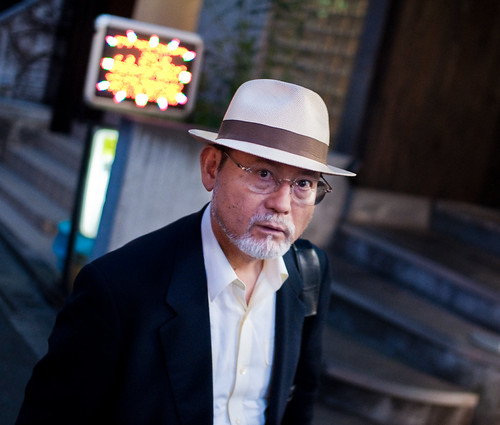It’s been already a year since I bought my Nikon D90. Before owning a D90 I had a D40 that helped me introduce myself into the photography world; the problem is that after one year I had already gotten the best out of it and I felt the need to use a better camera, mainly due to its lack of internal focus.
When upgrading from a D40 to a D90, the biggest change in my way of taking pictures was that I was not afraid to increase the ISO until 800 or even 2000. The ISO performance of the D90 is fabulous; it uses the same sensor as the D300 and D3. For example, I took this picture with ISO 1600. Additionally I used a F1.4 lens… It was almost completely dark and I could take a pretty decent picture! That was the big change I noticed; being able to play in low luminosity situations.

This photo would have been impossible to take with my D40.
Some other things about the D90 that I love are the LCD screen, which is huge and has a great contrast; and the extra wheel that changes your way of taking pictures, the D40 (and I think the D60 and the D5000 as well) have only one wheel because they are cameras for newbies. The D90 has two wheels, which make it really easy to select the F, the S and the ISO at the same time (the three main characteristics when taking a picture). In entry-level cameras they are usually hidden in beautiful menus.

One of the negative things I noticed was the weight…; you can really feel the change from the 500 grams of the D40/D60/D5000 to the 700-800 grams of the D90. Anyway, it’s not a really big problem and I have already gotten used to it. Another negative thing (even though I think it’s normal in cameras in the same price range) is that sometimes it’s not easy to focus in complicated situations, even though it has 11 focus points (Canon and Nikon entry/level cameras have only 3 focus points).
I suppose that to get even sharper focuses, faster and in complex situations you have to upgrade to a higher-end camera.
One of the improvements of the D90 (also available in the D300/D700/D3) is D-Lighting which was not available in Nikon cameras before. D-Lighting is a technology patented by Nikon that supposedly is able to “get more dynamic range” in a scene. It can do the job, but the problem is that indirectly it generates photos with an exaggerated contrast, and colors that seem artificial. For example, this picture is a JPEG withouth processing taken with my Nikon D90; notice the huge dynamic range, but also notice how blue is the sky even though the picture was taken at midnight!:

I am really happy with my D90; I have learned a lot with it and I still have a lot to learn. After one year using it, I really recommend it to any of you that has an entry-level camera and is willing to go a step further; I even recommend it as a first SLR camera. In this flickr set I have compiled pictures that I have taken with my D90 during the last year.















































